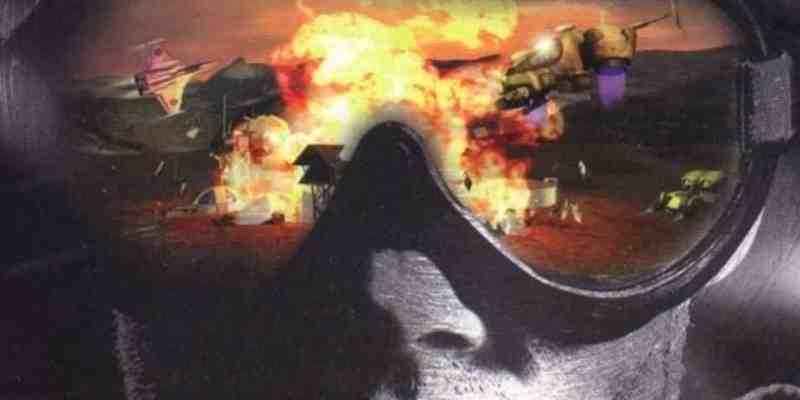It didn’t sit right with me last November when I first saw the trailer for Earthbreakers. It was a spiritual successor to the RTS/FPS hybrid Command & Conquer: Renegade by Petroglyph Games, a studio made up of the same people who worked at Westwood Studios and made the original Command & Conquer games. But I was watching the trailer a whole two weeks after its announcement — and I had only run across it by chance.
There had hardly been a mention about it anywhere online, including Twitter, and literally the only English-language news site that even brought it up was a WordPress blog called Gaming on PC.
That a game of this pedigree was going so far under everyone’s radar didn’t sit right with me at all. Was it possible that I was alone in thinking this was newsworthy? Was it possible that people just didn’t care about the developers who once formed the mighty Westwood Studios? It seemed unlikely. Westwood was legendary. They practically invented the real-time strategy genre when they released Dune II in 1992, and the Command & Conquer series kept pace with Blizzard’s Warcraft and StarCraft games when the genre was at its height.
But perhaps I was biased. I grew up in Las Vegas, where Westwood is based. I would stare yearningly from the back of my family’s Astro van whenever we drove by their offices. In my mind, they were an institution, the one major company in town for which “gaming” meant something other than tossing some money into a slot machine with the vain hope of its eventually tossing more back at you.
It hurt for all their fans when Westwood closed its doors in March 2003, after Earth and Beyond and Command & Conquer: Renegade were not the hits that Electronic Arts had hoped for. We Las Vegas residents had to wave a tearful goodbye as a cultural icon disappeared from our backyards.
In the time after Westwood disappeared, I grew up, got a journalism degree, took a job at a local news station, and spent a larger portion of my paycheck than I should have buying whatever games got my attention. Years later, I stumbled across a humble-looking RTS called 8-Bit Invaders!, took a look at the developers, and —
What did they mean, “formed by ex-Westwood Studios employees?” How had I gone 15 years without even knowing about this?
It turned out that, after Westwood Studios closed, not everyone chose to just go with the flow and merge into EA Los Angeles. Some chose to stick around in Las Vegas, including former Westwood vice president, Chuck Kroegel, lead programmer Joe Bostic, and senior software engineers Michael Legg and Steve Tall.
Westwood president Brett Sperry didn’t join — he went off to run a bunch of art galleries in town instead. But no matter! It was time for the developers to rise from the ashes and reclaim their former glory.
Or, it would have been if they had money. They didn’t. “It was quite a change to go from having a nice income for so many years to having none,” said Bostic.
Seeing as everything the developers created at Westwood was no longer their property, all they could do was gather in a small Las Vegas office and rewrite their code base from scratch. So they did.
It wasn’t until they met with LucasArts during E3 2003 that things finally took shape.
“After many discussions and planning, we signed the Star Wars: Empire at War deal with Lucas in October 2003,” Bostic said. “Once it was known what we were working on, and that we had income to hire people, old co-workers immediately started reaching out about joining us on our new adventure.”
The band was back together again — a new company that was made up of about 95% ex-Westwood employees, called Petroglyph Games.
When it was released in 2006, Empire at War was a resounding success for the company. It still stands as the best Star Wars strategy game out there. But it also was a high-water mark for the company — a level of public awareness and sales that they never quite reached again.

There are surely many people who knew long before I did that Petroglyph Games rose from the ashes of Westwood Studios. However, few people are actively aware the studio exists. Their social media presence totals a combined 12,000 followers across Twitter, Facebook, and YouTube. The company doesn’t even have a PR department — they’re entirely reliant on any publishers that they work for to get the word out.
Being a smaller studio isn’t entirely a bad thing, they note — it lets them experiment with new ideas, such as creating an RTS in VR with Base Blitz, or experimenting with customizable units in Forged Battalion.
“We can’t compete with 200-person development teams, so we try new ideas that are just too risky for big game publishers to try,” Bostic said. “This is the strength of small developers. Additionally, we need to continue to experiment, advance, and evolve to see where those roads lead us.”
Not all of the experiments were successful — the worst case, according to Bostic, was a game called End of Nations, which they started back in 2008 with publisher Trion Worlds. It was meant to be a MMO strategy game that used armies instead of characters.
“Initial testing didn’t go well, and the game design, along with the IP, changed radically during development,” Bostic said. “It was originally a subscription-based MMO game and then became a ‘free-to-play’ game. Ultimately, it became one of those products that lingered in development far longer than it should have.”
Petroglyph was eventually let go from the project, with development being taken in-house by publisher Trion Worlds, where it languished and eventually disappeared.
Even choices like revisiting Command & Conquer: Renegade’s base vs. base combat with Earthbreakers involves going in a direction that most developers don’t consider.
“It is surprising that this hasn’t been revisited by developers, especially considering the loyal fan base this combination has,” Bostic said. “It reminds us of what inspired the first RTS game — a melding of selected elements from existing games.”

Petroglyph is certainly not shy about its past. Their most recent game, the base defense game Conan Unconquered, is a pun that hints at their Westwood roots. Before that, they released 8-Bit Armies, 8-Bit Hordes, and 8-Bit Invaders — all of which play like Command & Conquer with the serial numbers filed off.
It’s hard not to notice that the company has remained dedicated to making RTS games, even though it’s not exactly the most popular genre anymore.
“There will always be a core of fans that enjoy RTS,” Bostic said. “The winds of genre popularity may shift over time, but as with many genres, there remains a dedicated core — especially for the classics in the genre.”
Though the staff has changed through the years, Petroglyph’s still made up of about 40% Westwood veterans. So, it all comes back to whether people still care about Westwood.
Well, I think I discovered the answer to that. Since a game by a local company technically qualifies as local news, I made a brief write-up on the announcement of Earthbreakers for local KSNV news’ website. It wasn’t a very good story — it mostly just regurgitated some of the features mentioned on Steam, mentioned its ties to Renegade, and included an embedded version of the trailer.
Nonetheless, I shared the story to Reddit, where it quickly got deleted for not being the original source. But that was really all it took. Word spread.
Almost immediately, other media outlets started talking about the game, even though technically the news of its announcement was two weeks old. It wasn’t that nobody cared — it’s just nobody knew it existed. As soon as people knew about it, they realized that it was news worth sharing.
Fans started getting excited. The moment that stood out to me the most was when I was talking online about Petroglyph’s involvement in the upcoming remake of the original Command & Conquer, and someone excitedly told me about how Petroglyph is also making a Renegade spiritual successor. They shared a link to a story about the game.
It was my story.
So yes, people do care about Westwood, and people care about what the developers who worked on all their favorite old games are up to now. But before they can care, they need to know that they exist.
